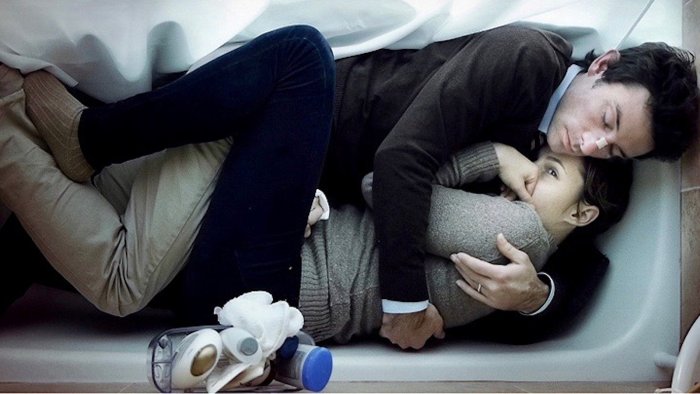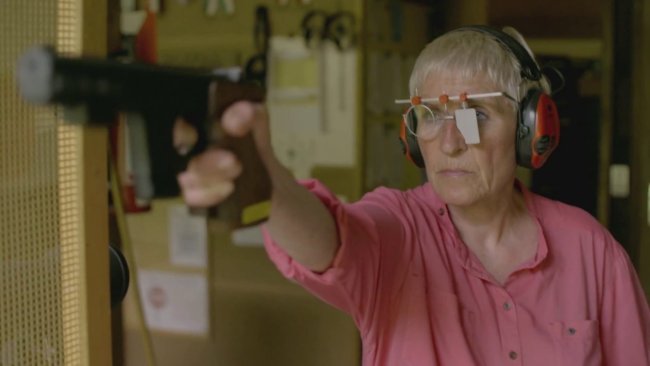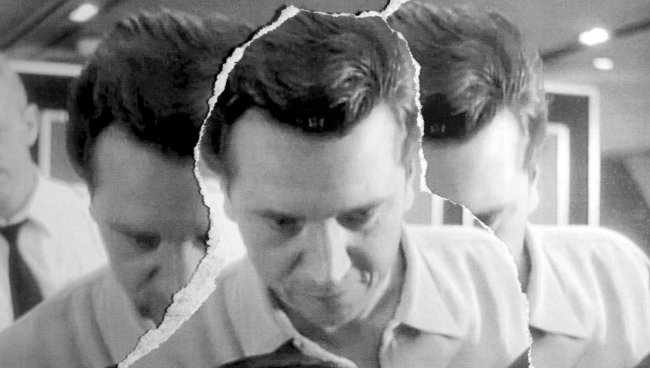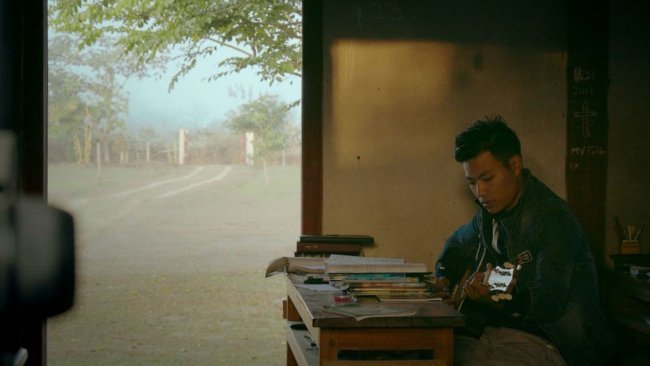Upstream Color
[…] The editing, sound, framing, and even the dialogues are completely subjected to the film’s emotional logic, leaving the viewer to sort things out for himself, should he not instead choose to simply drift on the surface of the pure stream of consciousness.
[…] Carruth has said in an interview that he wanted to create an entirely new language of film, and while this may seem an overly ambitious description for what this film achieves, it certainly results in a form of cinematic language that is, unfortunately, seldom experienced.
Text: Dominic Schmid

If the experience of watching Upstream Color for the first time resembles anything, it's neither any other film (although its sensual aesthetics have been compared to Terrence Malick's later oeuvre), nor does it resemble any feeling you might have in waking life, with both brain-hemispheres working in a general cognitive collaboration. Instead it resembles those moments just after waking up: eyes still closed but registering the sunlight touching their lids; the mind busy with free-associations of half-remembered images from dreams; diffuse warm feelings and fuzzy expectations of what is to come upon opening your eyes; unprocessed emotions linked to sounds, especially those with unidentifiable sources that must have affected the last images of your dream. It is beautiful while it lasts, and perhaps even more so because you know with certainty that you will not remember any part of it once your day has started and your mind has thrown out anything not strictly useful to its normal functions.
This is not to say that the plot of Shane Carruth's Upstream Color makes no sense. It is a weird plot by any standards, and many important details are left out by its associative, rather than strictly logical, editing and narration. Once the details have been grasped, you can more or less follow the plot about a very particular species of worm that is used by someone only called "The Thief" to hypnotize his victims in order to keep them in a sort of suggestive state, having them learn Thoreau's Walden by heart, prohibiting them from eating solid food, and robbing them of their possessions and, more absurdly, transferring parts of their souls into pigs, to which all the victims then maintain some sort of psychic connection even if they forget everything that has happened to them. It makes much more sense on the screen than on the page, which is mostly due to Carruth’s cinematic language. The editing, sound, framing, and even the dialogues are completely subjected to the film’s emotional logic, leaving the viewer to sort things out for himself, should he not instead choose to simply drift on the surface of the pure stream of consciousness. Carruth has said in an interview that he wanted to create an entirely new language of film, and while this may seem an overly ambitious description for what this film achieves, it certainly results in a form of cinematic language that is, unfortunately, seldom experienced.
A general feeling of melancholy experienced by its traumatized protagonists, who can remember nothing their abductions – of both body and mind –, is contrasted by a sense of interconnectedness. When Kris (Amy Seimetz) and Jeff (Shane Carruth), both victims of the abductions, meet for the first time, they sense a connection that they can't quite place, but choose to follow its implications anyway. Their path leads them to the film’s most interesting character, called the Sampler. Neither good or evil, the Sampler looks after the pigs holding the souls of the formerly abducted: feeding them, recording a large library of sound samples (for unknown reasons), seemingly omnipotent, and, like a demiurge, somehow creating the aural and emotional realities of the protagonists. Viewing him as a metaphor for the director of the film might be tempting, but for this his role is too much that of an observer than of a creator. Also, it wouldn't quite match Carruth’s own role in the creation of Upstream Color, as he was responsible not only for directing the film and writing the screenplay, but also for producing, filming, designing the sounds, composing the music, editing and (last ...and least) playing one of the main roles.
Upstream Color is not a film for all tastes by any means. Even if it manages to create a stream of emotions that is at once conflicted and harmonious almost solely with a creative use of cinematic language, it is still a long shot from the films that inspired it in the first place – Malick, Lynch, and possibly Jodorowsky. Had Carruth cast another more versatile actor next to the great Amy Seimetz, capable of rendering the romantic subplot as emotionally resonant as the rest of the film, Upstream Color might have been a masterpiece. As it is, this is a very beautiful and weird film; one that improves the more you surrender to its hypnotic effects that linger in your mind, unlike a dream, long after you've experienced them and slightly alter your perception. Any film that succeeds in doing this, however imperfectly, deserves to be viewed, experienced, pondered, and treasured.
This article contains a third-party video. If you would like to watch the video, please adjust your settings.
Watch
Info
Upstream Color | Film | Shane Carruth | USA 2012 | 96’ | Cinéma Spoutnik Genève
First published: April 18, 2017



